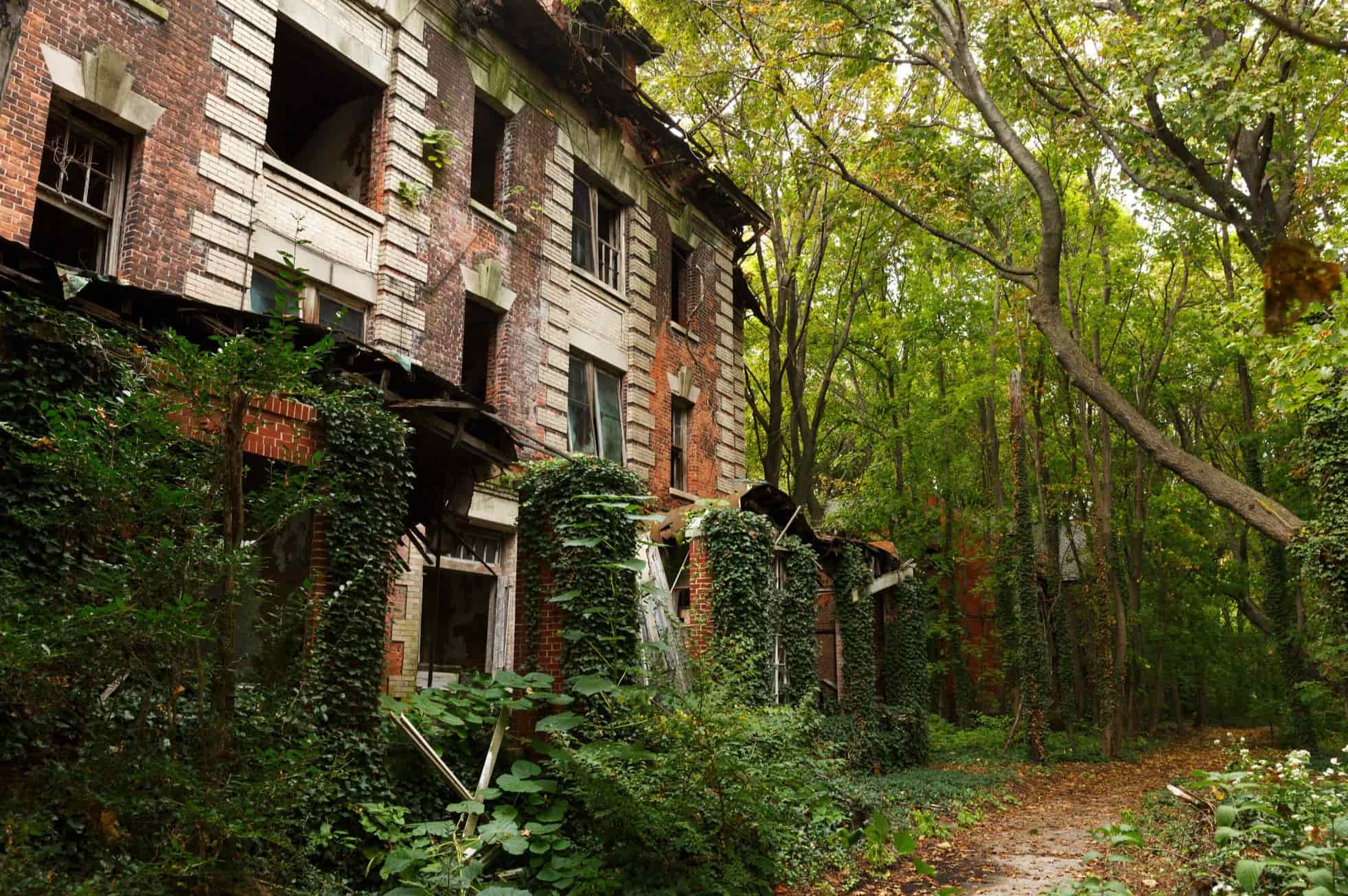
North Brother Island is a small, uninhabited island in New York City's East River. Once bustling with activity, it now stands as a haunting reminder of its storied past. Why is North Brother Island so intriguing? This island has served many purposes over the years, from a quarantine hospital to a drug rehabilitation center. It even housed the infamous "Typhoid Mary." Today, it's off-limits to the public, making it a mysterious and fascinating topic for urban explorers and history buffs alike. What secrets does North Brother Island hold? Let's dive into 35 captivating facts that will shed light on this enigmatic place.
Key Takeaways:
- North Brother Island has a rich and mysterious history, from being a quarantine hospital to a bird sanctuary. It's off-limits to the public, but its eerie reputation and architectural remnants continue to captivate people's imaginations.
- Despite its tragic past, North Brother Island is now a thriving habitat for wildlife and a subject of fascination in popular culture. Efforts to preserve its unique environment and history are ongoing, ensuring its legacy lives on.
North Brother Island: A Mysterious Past
North Brother Island, located in New York City's East River, has a rich and mysterious history. Once a quarantine hospital, it now stands abandoned, shrouded in mystery and intrigue. Here are some fascinating facts about this enigmatic island.
-
North Brother Island was first inhabited in 1885 when Riverside Hospital moved there to quarantine and treat patients with contagious diseases.
-
The island is infamous for being the place where "Typhoid Mary" Mallon was forcibly quarantined for over two decades.
-
During the 1950s, the island housed a juvenile drug treatment center, which was eventually closed due to allegations of corruption and abuse.
-
The island is now a bird sanctuary, home to one of the largest colonies of Black-crowned Night Herons in the northeastern United States.
-
Access to North Brother Island is restricted, requiring special permission from the New York City Department of Parks and Recreation.
Tragic Events and Notable Incidents
North Brother Island has witnessed several tragic events and notable incidents throughout its history. These events have left an indelible mark on the island's legacy.
-
In 1904, the General Slocum steamboat caught fire near North Brother Island, resulting in the deaths of over 1,000 people, mostly women and children.
-
The island's hospital treated survivors of the General Slocum disaster, many of whom were severely burned or injured.
-
During World War II, the island was used as a rehabilitation center for returning veterans.
-
The island's hospital buildings have been abandoned since the 1960s, slowly decaying and being reclaimed by nature.
-
North Brother Island has been the subject of numerous ghost stories and urban legends, adding to its eerie reputation.
Flora and Fauna
Despite its abandoned state, North Brother Island is teeming with life. The island's flora and fauna have flourished in the absence of human activity.
-
The island is covered in dense vegetation, including trees, shrubs, and wildflowers.
-
North Brother Island is a critical habitat for migratory birds, providing a safe haven for nesting and feeding.
-
The island's isolation has allowed several rare plant species to thrive, some of which are not found anywhere else in New York City.
-
The surrounding waters are home to various fish species, making it a popular spot for birdwatching and wildlife observation.
-
The island's ecosystem is carefully monitored and protected by conservationists to ensure its continued health and biodiversity.
Architectural Remnants
The remnants of North Brother Island's past can still be seen in its abandoned buildings and structures. These architectural relics offer a glimpse into the island's history.
-
The island's main hospital building, once a state-of-the-art facility, now stands in ruins, overtaken by vines and trees.
-
Several smaller buildings, including staff quarters and administrative offices, are scattered across the island, all in various states of decay.
-
The island's power plant, which once provided electricity to the hospital, is now a crumbling shell of its former self.
-
A small chapel, used by patients and staff for religious services, still stands, though it is in a state of disrepair.
-
The island's dock, once bustling with activity, is now a quiet and overgrown reminder of the island's past.
Cultural Impact and Media
North Brother Island has left a lasting impact on popular culture and media, inspiring countless stories, documentaries, and artistic works.
-
The island has been featured in several documentaries, highlighting its history and current state of abandonment.
-
Numerous books and articles have been written about North Brother Island, exploring its past and the lives of those who lived and worked there.
-
The island has inspired several fictional works, including novels and short stories, often focusing on its eerie and mysterious atmosphere.
-
Photographers and artists have been drawn to the island's haunting beauty, capturing its decaying buildings and overgrown landscapes.
-
North Brother Island has been the subject of several urban exploration videos, showcasing its abandoned structures and hidden secrets.
Environmental and Conservation Efforts
Efforts to preserve and protect North Brother Island's unique environment and history are ongoing. These initiatives aim to ensure the island remains a valuable natural and historical resource.
-
The island is part of the Harbor Herons Project, a conservation initiative focused on protecting heron populations in New York Harbor.
-
Regular surveys and studies are conducted to monitor the island's bird populations and overall ecosystem health.
-
Conservationists work to control invasive plant species on the island, ensuring native flora can thrive.
-
Efforts are made to prevent unauthorized access to the island, protecting its wildlife and historical structures from damage.
-
Educational programs and guided tours are occasionally offered to raise awareness about the island's history and ecological significance.
Future Prospects and Speculations
The future of North Brother Island remains uncertain, with various proposals and speculations about its potential uses and preservation.
-
Some have suggested turning the island into a public park, allowing controlled access for visitors to explore its history and natural beauty.
-
Others advocate for maintaining the island as a wildlife sanctuary, ensuring its continued protection and conservation.
-
There have been proposals to restore some of the island's historical buildings, creating a museum or educational center.
-
The island's unique history and environment make it a potential site for scientific research and ecological studies.
-
Despite its uncertain future, North Brother Island remains a fascinating and mysterious place, capturing the imagination of all who learn about it.
Final Glimpse at North Brother Island
North Brother Island, with its rich history and hidden stories, offers a unique peek into New York City's past. From its days as a quarantine hospital to its current status as a bird sanctuary, the island has seen it all. The abandoned buildings and overgrown pathways tell tales of a bygone era, making it a fascinating subject for history buffs and urban explorers alike.
Despite being off-limits to the public, the island's mystique continues to captivate those who hear about it. Whether it's the tragic tale of the General Slocum disaster or the eerie remnants of Riverside Hospital, North Brother Island remains a symbol of both tragedy and resilience. As we reflect on these 35 facts, it's clear that this small piece of land holds a significant place in the tapestry of New York's history.
Frequently Asked Questions
Was this page helpful?
Our commitment to delivering trustworthy and engaging content is at the heart of what we do. Each fact on our site is contributed by real users like you, bringing a wealth of diverse insights and information. To ensure the highest standards of accuracy and reliability, our dedicated editors meticulously review each submission. This process guarantees that the facts we share are not only fascinating but also credible. Trust in our commitment to quality and authenticity as you explore and learn with us.


